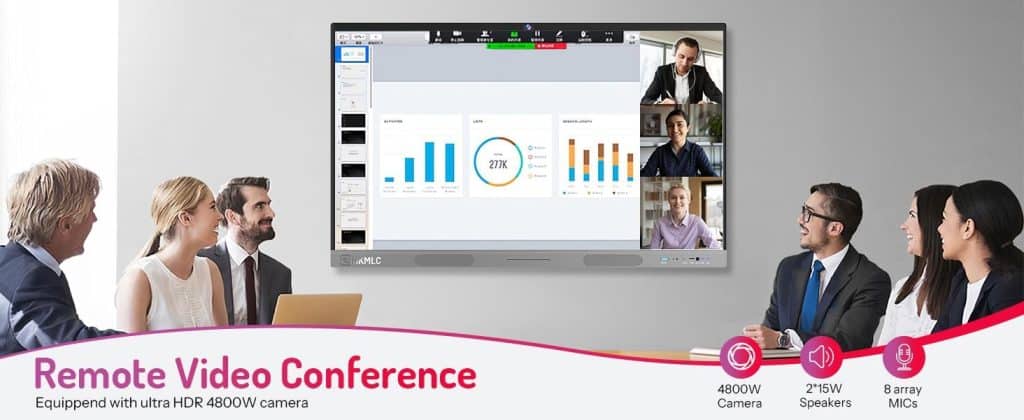A decade ago, huddling around a physical whiteboard felt like the heartbeat of every creative session. Fast‑forward to a world of hybrid and fully remote teams, and that wall‑mounted board has migrated to the cloud, accessible on any screen, at any time.
Online whiteboards combine the spontaneity of pen‑and‑paper sketching with the power of digital collaboration tools, allowing dispersed colleagues to co‑create in real time, attach rich media, and track revisions automatically.
Whether you’re refining a product roadmap, mapping customer journeys, or tutoring students across continents, a virtual canvas removes physical and temporal boundaries, letting ideas flow freely while still capturing everything in one persistent workspace.
1. What Exactly Is an Online Whiteboard?
An online whiteboard is a cloud‑based, infinite canvas that replicates (and expands on) the functionality of a traditional whiteboard. Users can draw, type, import documents, embed videos, and manipulate sticky notes often simultaneously with dozens (or hundreds) of collaborators.
These capabilities turn a one‑dimensional board into a dynamic knowledge hub, promoting continuous, asynchronous ideation long after the live meeting ends.
- How Online Whiteboards Transform Team Collaboration
- Break down geographic silos – Colleagues across time zones brainstorm together without booking flights or boardrooms.
- Boost engagement – Visual, interactive canvases keep participants involved, reducing multitasking and meeting fatigue.
- Capture institutional knowledge – Every sketch, comment, and sticky note is saved, searchable, and shareable.
- Accelerate decision‑making – Built‑in voting tools and instant feedback loops speed up consensus.
- Promote inclusivity – An online format empowers quieter voices; anyone can jot a note or emoji‑react in real time.
Research from Gartner indicates that teams using virtual whiteboards see a 23 % faster ideation‑to‑decision cycle versus chat‑only collaboration, underscoring the tool’s impact on velocity and clarity.
3. Essential Features to Evaluate Before You Adopt
- Infinite canvas & object grouping – Ensure you’ll never “run out of space” and can logically segment ideas.
- Template marketplace – Pre‑built frameworks shorten setup time for design sprints or retrospectives.
- Presentation (“follow‑me”) mode – Let facilitators guide the group’s view for structured walkthroughs.
- Third‑party integrations – Look for native connectors to Slack, Jira, Microsoft Teams, and Google Workspace.
- Accessibility compliance – WCAG‑friendly text contrast, keyboard shortcuts, and screen‑reader support widen participation.
- Enterprise‑grade security – SOC 2, ISO 27001, and granular permission controls protect sensitive IP.
- Offline & low‑bandwidth options – Sync changes when connection improves, vital for globally distributed teams.
Some vendors, such as HKMLC Smart Whiteboards, bridge the gap between digital and physical spaces by pairing a touch‑sensitive display with the same cloud platform, letting in‑person attendees draw naturally while remote colleagues contribute on their laptops.
4. Real‑World Use Cases Across Industries
Product Development & UX
Agile squads run daily stand‑ups, backlog grooming, and sprint retrospectives in a single workspace. Wireframes can be dragged from Figma, annotated, and approved during one session.
Education & Training
Teachers convert lessons into interactive storyboards, embedding YouTube videos alongside diagrams. In higher education, HKMLC Smart Whiteboards turn lecture halls into blended learning theaters by mirroring the online board onto giant 4K touchscreens.
Marketing & Branding
Creative teams storyboard ad concepts, drop in mood‑board assets, and pin customer personas next to campaign timelines. Stakeholders vote asynchronously with emoji‑based polling.
Consulting & Workshops
Facilitators supply clients with a pre‑loaded board of design‑thinking templates, shortening multi‑day workshops into half‑day sprints while still capturing all ideas in high‑resolution exports.
Engineering & Architecture
Technical drawings imported as vector files retain layers, allowing engineers to zoom into threading specs while architects overlay structural notes.

5. Best Practices for Maximizing Collaboration
- Set a clear objective – Every session should start with a concise goal, visible in a “north‑star” text box.
- Limit editing permissions – Assign facilitators to manage object locking; this prevents accidental overwrites.
- Use color coding – Establish a color legend (e.g., blue = features, yellow = risks) to reduce visual chaos.
- Leverage time‑boxed activities – Timer widgets cue participants to sketch ideas quickly and maintain momentum.
- Record and recap – Turn on meeting recording or export a PDF summary; email a recap within 24 hours to reinforce key decisions.
Pro tip: When brainstorming remotely, circulate an agenda with template links at least one day in advance. Early birds can add thoughts asynchronously, creating a richer starting point for the live discussion.
6. Integrating Online Whiteboards Into Existing Workflows
a. Project Management Suites
Automate card creation: when a sticky note is tagged “task,” tools like Zapier or native integrations can convert it into a Jira issue or Trello card, maintaining continuity.
b. Video Conferencing
Embed the board directly inside Zoom or Microsoft Teams to reduce tab‑switching, ensuring everyone stays focused on one visual source of truth.
c. Document Repositories
Sync exports to SharePoint or Google Drive, preserving version‑controlled archives alongside related project docs.
d. Learning Management Systems (LMS)
Instructors can embed real‑time boards inside Canvas or Moodle, grading participation with built‑in analytics.
For teams relying on touch‑enabled meeting rooms, platforms that pair seamlessly with HKMLC Smart Whiteboards empower organizations to switch fluidly between in‑person sketching and remote contributions without duplicating effort.
7. Security, Compliance, and Governance
Because whiteboards often host proprietary diagrams, compliance must sit front and center:
- Data encryption – Look for AES‑256 at rest and TLS 1.2+ in transit.
- Regional data residency – EU‑based firms may require GDPR‑compliant storage in specific countries.
- Detailed audit logs – Track who viewed, edited, or exported sensitive content.
- SSO & SCIM – Single‑sign‑on and automated user provisioning simplify IT management and reduce shadow‑IT risks.
- Retention policies – Define auto‑delete schedules or archival rules to keep storage footprints lean.
A cyber‑secure platform not only wards off threats but also boosts user confidence, critical for high‑stakes brainstorming in finance, healthcare, and government sectors.
Qualitative Indicators
- Employee satisfaction scores in post‑project surveys
- Speed of onboarding new hires who can review past whiteboard sessions
- Managerial confidence in visibility over dispersed teams
Calculate ROI by contrasting reduced travel costs, shorter project timelines, and lower meeting counts against subscription fees and rollout training.
9. Future Trends Shaping Online Whiteboards
- AI‑assisted brainstorming – Generative‑AI will suggest ideas, group similar stickies, and auto‑generate flowcharts from hand‑drawn scribbles.
- Spatial computing – With AR/VR‑ready canvases, participants “walk” around 3‑D whiteboards, manipulating objects with hand gestures.
- Voice‑to‑diagram – Natural‑language processing converts spoken workflows into ready‑made swim‑lane diagrams.
- Deep analytics – Heat‑map overlays show which sections of the board receive the most attention, guiding facilitation strategies.
- Hardware‑software convergence – Expect more all‑in‑one devices that automatically sync to cloud canvases the moment you uncap the stylus.

Final Thoughts :
Modern collaboration demands tools that are as flexible as your workforce. Online whiteboards deliver an ever‑ready canvas for creativity, consensus, and execution, erasing barriers posed by distance, device, or schedule.
Platforms that pair seamlessly with HKMLC Smart Whiteboards empower organizations to combine hands‑on sketching with the limitless reach of the cloud, future‑proofing both in‑person workshops and remote sprints. Embrace best practices, integrate with your core stack, and track measurable outcomes. You’ll not only enhance collaboration, you’ll unlock a culture where every idea, from every corner of the globe, has room to grow.







